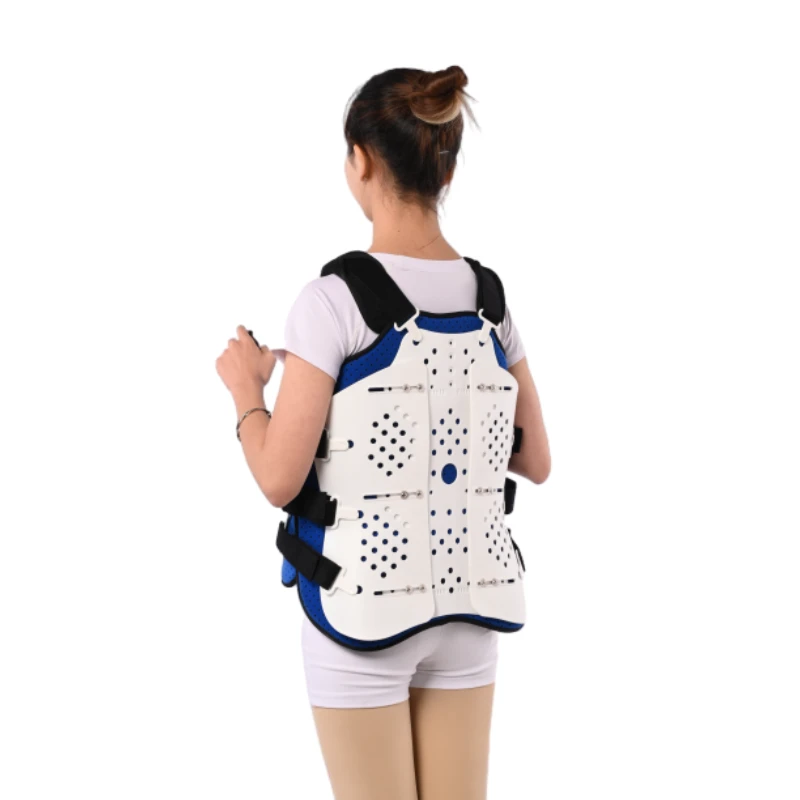Fev . 08, 2025 07:32
Back to list
what is a shoulder brace used for
Shoulder braces are medical devices intended to provide support, stability, and comfort to individuals experiencing a variety of shoulder-related issues. These issues can range from minor strains and sprains to more severe conditions like rotator cuff injuries or dislocations. By offering external support, shoulder braces help reduce pain, facilitate proper healing, and prevent further injury, making them an essential tool for both rehabilitation and preventive care.
Over the years, advancements in technology and materials have significantly enhanced the design and functionality of shoulder braces. Modern shoulder braces are engineered to be more comfortable and less restrictive, ensuring users maintain a good range of motion while benefiting from the necessary support. Materials such as neoprene, breathable mesh, and specialized foams contribute to making braces lighter yet equally effective in providing stability. It's important to highlight that shoulder braces are not just limited to physical injuries or sports backgrounds. They are increasingly being utilized by individuals working in professions that involve repetitive overhead movements, such as painting or construction. In such cases, shoulder braces serve as preventive measures, reducing fatigue and lowering the probability of stress injuries that may occur from prolonged, repetitive motion. Furthermore, using a shoulder brace during daily activities can build confidence in individuals who have experienced past injuries. Knowing that there is added support can empower users to resume tasks and hobbies they might have previously avoided, fostering an improved quality of life. Thus, shoulder braces are not only about physical support but also about psychological assurance, spurring individuals toward a more active and engaged lifestyle. In summary, shoulder braces are versatile tools essential for both the treatment and prevention of shoulder injuries. By consulting with healthcare professionals, selecting the appropriate type of brace, and understanding its proper use, individuals can significantly enhance their recovery and maintain optimal shoulder health. The combination of technical innovation, user-friendly design, and expert guidance makes shoulder braces a reliable ally in managing shoulder conditions effectively.


Over the years, advancements in technology and materials have significantly enhanced the design and functionality of shoulder braces. Modern shoulder braces are engineered to be more comfortable and less restrictive, ensuring users maintain a good range of motion while benefiting from the necessary support. Materials such as neoprene, breathable mesh, and specialized foams contribute to making braces lighter yet equally effective in providing stability. It's important to highlight that shoulder braces are not just limited to physical injuries or sports backgrounds. They are increasingly being utilized by individuals working in professions that involve repetitive overhead movements, such as painting or construction. In such cases, shoulder braces serve as preventive measures, reducing fatigue and lowering the probability of stress injuries that may occur from prolonged, repetitive motion. Furthermore, using a shoulder brace during daily activities can build confidence in individuals who have experienced past injuries. Knowing that there is added support can empower users to resume tasks and hobbies they might have previously avoided, fostering an improved quality of life. Thus, shoulder braces are not only about physical support but also about psychological assurance, spurring individuals toward a more active and engaged lifestyle. In summary, shoulder braces are versatile tools essential for both the treatment and prevention of shoulder injuries. By consulting with healthcare professionals, selecting the appropriate type of brace, and understanding its proper use, individuals can significantly enhance their recovery and maintain optimal shoulder health. The combination of technical innovation, user-friendly design, and expert guidance makes shoulder braces a reliable ally in managing shoulder conditions effectively.
Latest News
-
Abduction Pillow Brace: Comfortable Hip Support Post-SurgeryNews Aug.01,2025
-
Hard Cervical Collar - Hebei Jianhang Technology Co., Ltd.|Neck Support, Comfort, StabilityNews Aug.01,2025
-
Hard Cervical Collar - Hebei Jianhang | Neck Support, Adjustable FitNews Aug.01,2025
-
Hard Cervical Collar - Hebei Jianhang Technology Co., Ltd.|Advanced Neck Support, Adjustable FitNews Aug.01,2025
-
Hard Cervical Collar - Hebei Jianhang Technology Co., Ltd.|Neck Support&Comfortable DesignNews Jul.31,2025
-
Hard Cervical Collar - Hebei Jianhang Technology Co., Ltd.|Adjustable Neck Support, Lightweight Cervical CollarNews Jul.30,2025
Have a question? Keep in touch.





















